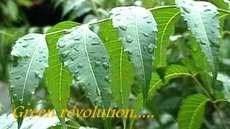 |
A solar flare created a spectacular eruption on June 7 (pictured). Image courtesy SDO/NASA |
A mushroom of cooled plasma popped like a pimple and rained onto the surface of the sun yesterday—shooting perhaps the largest amount of solar material into space ever seen, scientists say.
The solar flare—an unusually bright spot on the sun—wasn't surprising as a "moderate" event. Space observatories in the past year recorded about 70 such solar flares, each roughly ten times weaker than "extreme" flares, of which only two have occurred since 2007.
(Related: "Biggest Solar Flare in Years—Auroras to Be Widespread Tonight?")
Instead, what shocked scientists was the unusual amount of material that lofted up, expanded, and fell back down over roughly half the surface area of the sun. The event's simultaneous launch of particles into space is called a coronal mass ejection (CME).
"This totally caught us by surprise. There wasn't much going on with this spot, but as it came from behind the sun, all of the sudden there was a flare and huge ejection of particles," said astrophysicist Phillip Chamberlin of NASA's Solar Dynamics Observatory (SDO), one of several spacecraft that recorded the event.
"We've never seen a CME this enormous."
Solar Flares May Threaten Power Grids
Chamberlin said it will take some time to calculate the energy and mass of electrons and protons blasted into space. But he noted the volume occupied a space hundreds of times bigger than a single Earth.
The ejection of particles burst from the right limb of the sun and sprayed into space, so the blast will miss Earth—though the explosion may brighten auroras near Earth's poles, Chamberlin said.
But he warned space-weather experts are concerned about future solar events.
The sun's 11-year cycle of activity, driven by tangled surface magnetic fields, will hit its maximum in late 2013 or early 2014. Magnetic messiness will peak around that time and prompt nasty solar storms.
"We'll probably see [extreme] flares every couple of months instead of years," Chamberlin said.
If one of these powerful flares—and its coronal mass ejection—faces Earth, the particles will pound satellite components with charged particles, short some out, and potentially cripple them.
On the planet's surface, extra currents of solar particles drive extra electric current through power lines and heat them up. A solar storm in 1859, for example, caused telegraph lines to burst into flames. Power companies distribute loads to avoid such a disaster, but energetic solar storms could still blow transformers and lead to power outages, especially during heat waves like the one sweeping the eastern U.S. this week.
"Despite great countermeasures, the power grid is still vulnerable. We could be in for some serious problems," Chamberlin said.
For more on solar flares, sunspots, and solar wind, read "The Sun—Living With a Stormy Star," from National Geographic magazine >>
